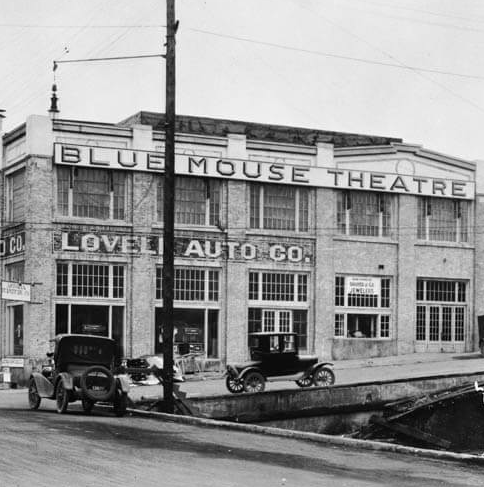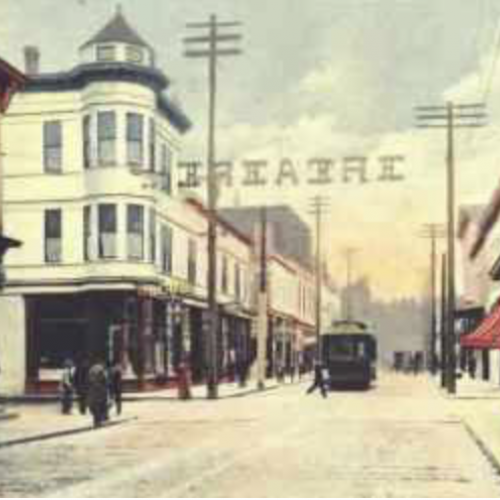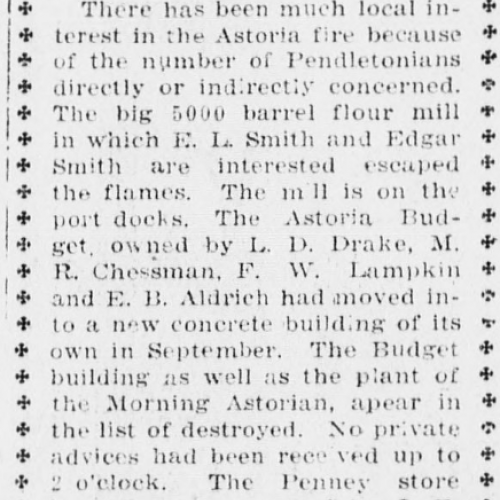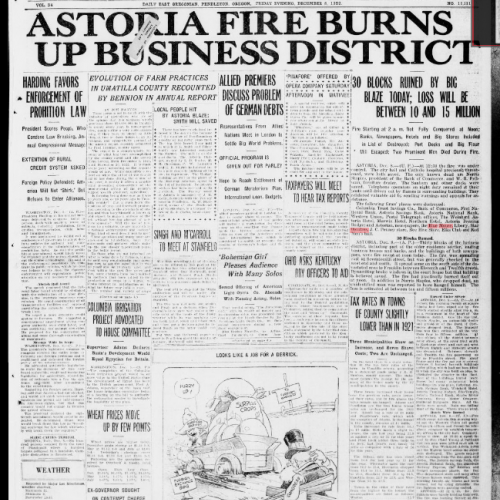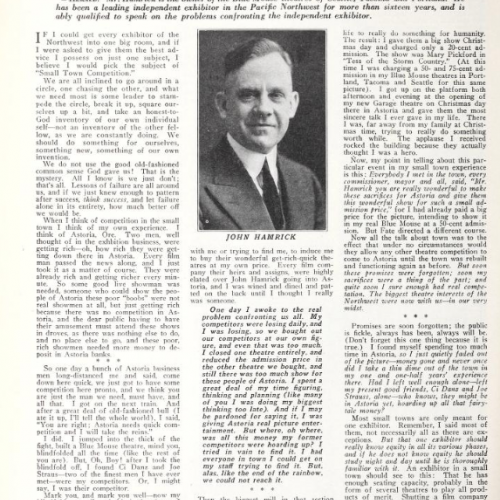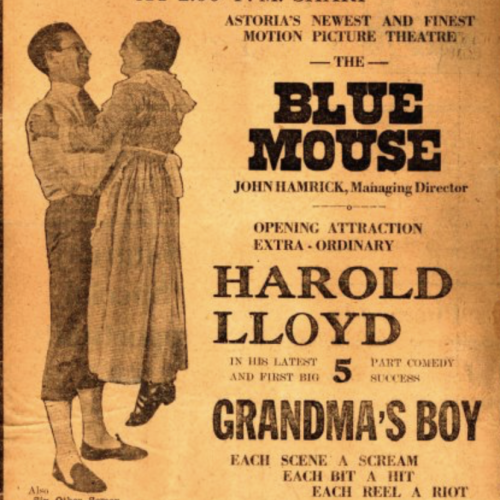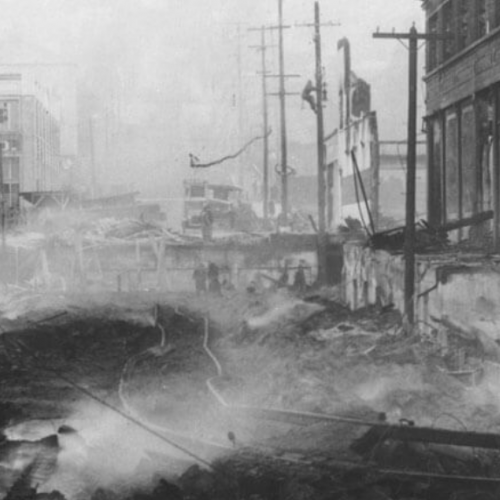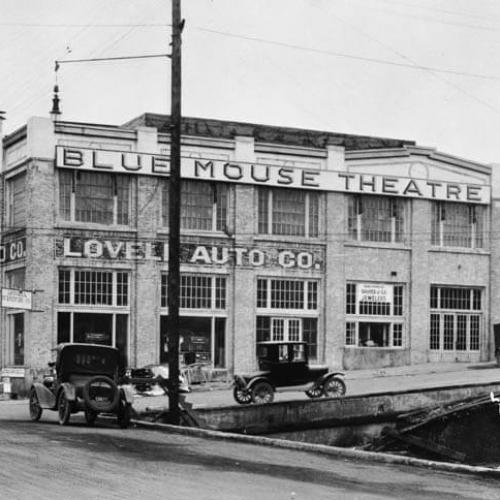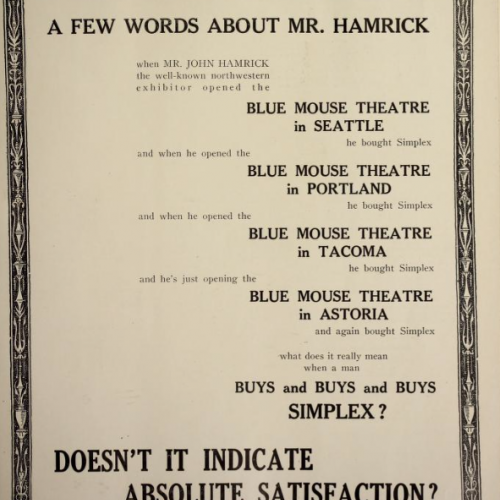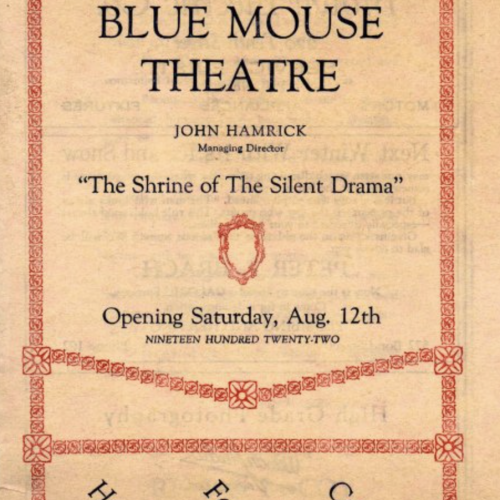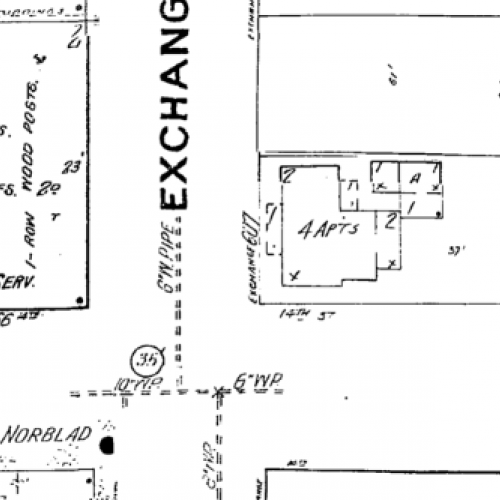The Blue Mouse Theater opened August 12, 1922 in Astoria, Oregon. John Hamrick was the managing director of the theater, and he chose to open the new movie house with Grandma's Boy featuring Harold Lloyd which was a 5 part comedy, and claimed, "Each scene a scream, each bit a hit, each reel a riot."
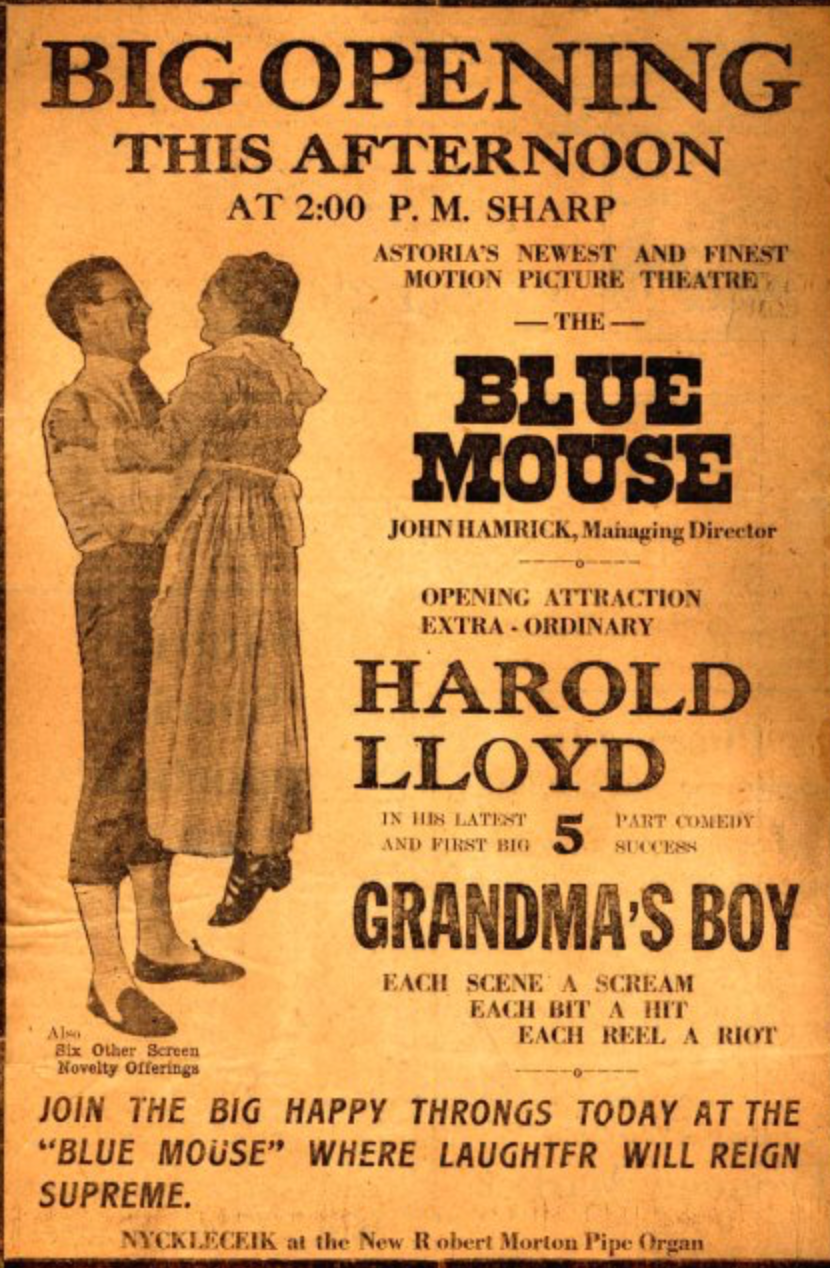
The Blue Mouse Theater was very popular and seemed like it was going to be a success, but in 1922 just four months after the theater opened, a fire on December 7 wiped out over 200 businesses within 30 blocks of downtown Astoria, and the Blue Mouse was one of the buildings claimed.
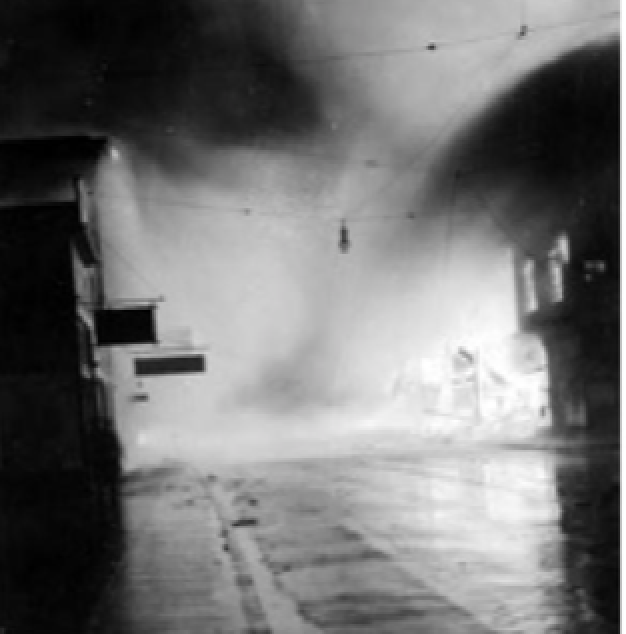
Along with the Blue Mouse, other theaters including the Star, Liberty and Astoria theaters were all destroyed. This took out most of the play houses in the city, and three of them were owned by John Hamrick. With Christmas approaching so soon after the fire Hamrick was determined to re-open the Blue Mouse by December 25, 1922 as a gift to the people of Astoria.
Hamrick returned to Astoria from business in Seattle to smoldering streets and the ruins of his three theaters, and this is when he told Mayor Bremner he would have a new theater by Christmas Day. His first move was securing a lease in the Lovell building on the corner of 14th and Exchange streets.
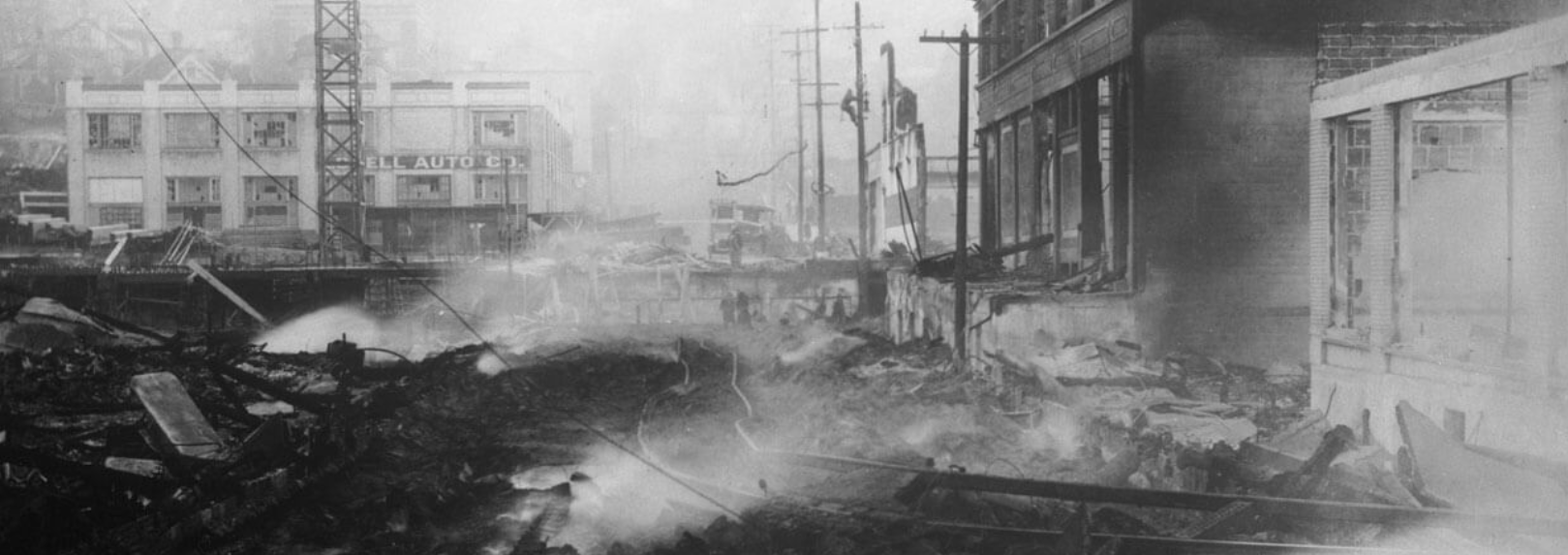
Hamrick worked day and night with electricians, carpenters, and painters. He brings chairs in from Portland and a Photoplayer organ and Gardiner screen from Seattle as well as other equipment. On Christmas Day the, now only, theater opened with Mary Pickford's "Tess of the Storm Country" which Hamrick charged lower prices than had ever been charged for a first run of this film, 10 cents. In comparison, the same movie opened at the Blue Mouse Theater in Portland on the same day for 75 cents.
The new Blue Mouse Theater was the only one at the time, but it was a marvelous Christmas present to the still recovering citizens of Astoria who had lost so much just weeks before. Hamrick sacrificed being at the Blue Mouse Theater in Seattle with his family in order to be in Astoria and complete this project on time, but he claims it was worth the sacrifice if it meant bringing joy and entertainment to the city of Astoria.
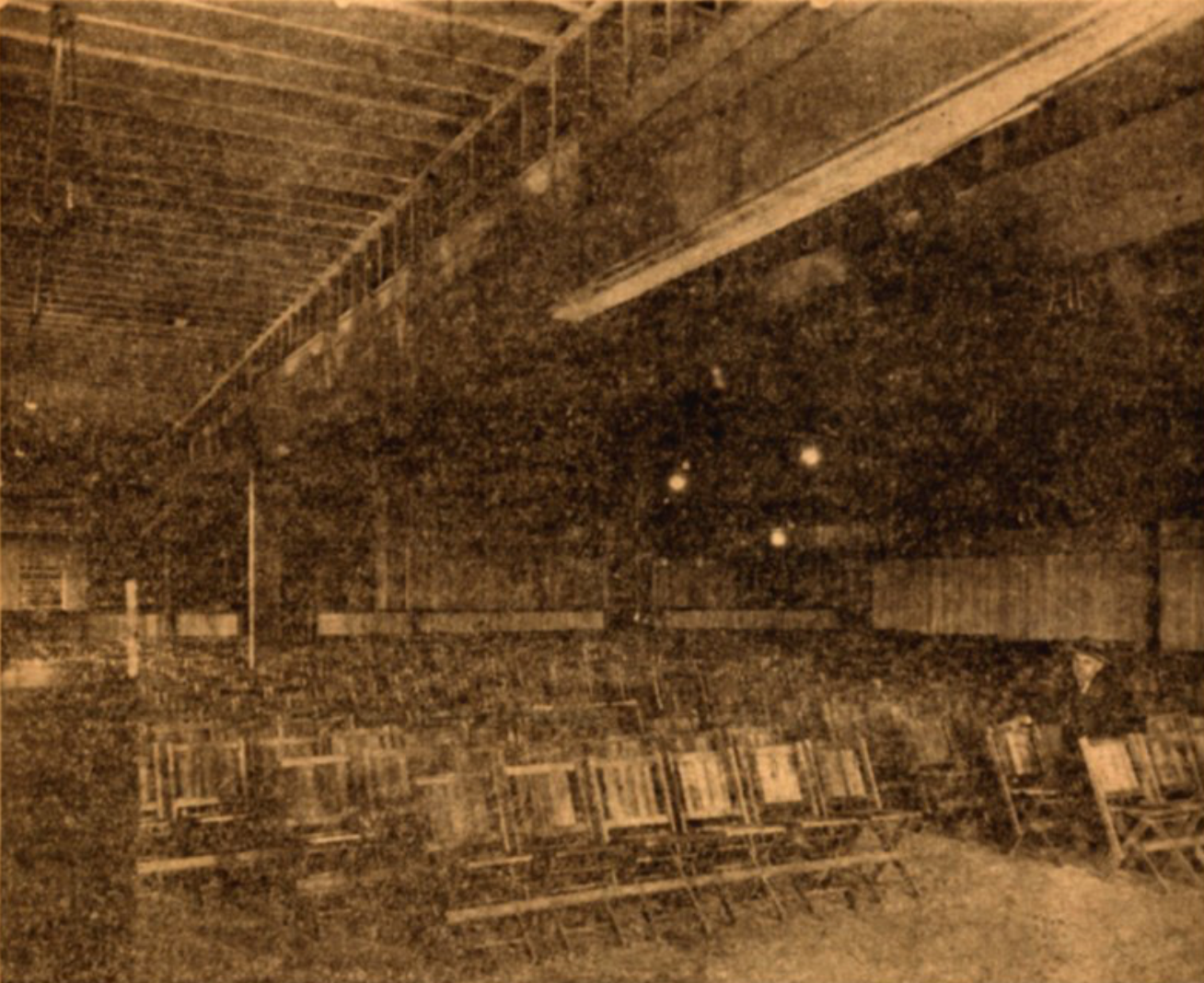
The heart of the Blue Mouse Theater was clearly a reflection of Hamrick, but he doesn't claim to have done it alone and gives credit to H.E. Jackey who installed a lot of the equipment, A.E. Woersel who installed the organ, Art Hile who was the resident manager and his assistant, H.R. Resner. There were also the architect, C.T. Diamond, and, of course, the organist, George Nykliciek. After the fire, Nykliciek was offered a big position at a theater in San Francisco, but he refused the offer and got another job in Astoria while he waited for Hamrick to finish the Blue Mouse so the he could go back to working for Hamrick.
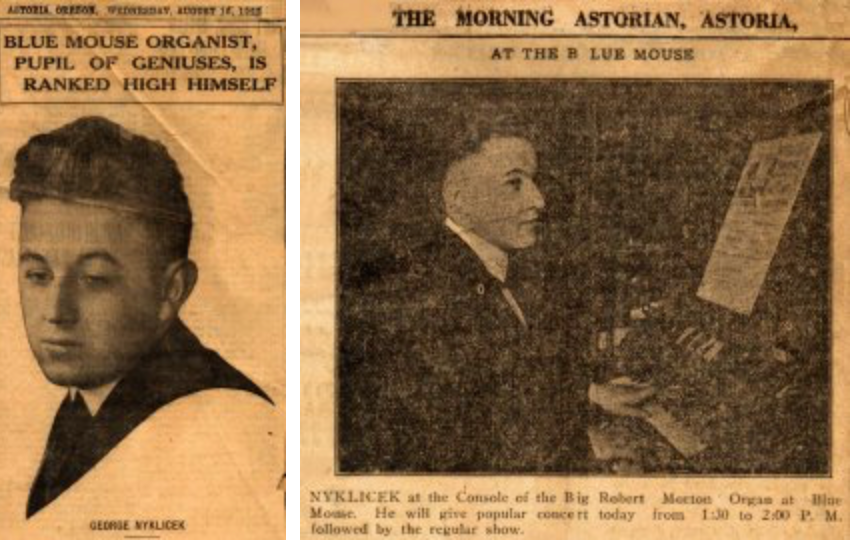

The Lovell building was originally built in 1921, and following the fire it became the cultural hub for the city housing an arcade, the Blue Mouse Theater, and varying businesses throughout the year. The building remained a garage as an automotive dealership and repair facility until the late 1990s. After this, the building was abandoned for a period of time, and now it is home to a bakery and brewery and pub house, continuing its legacy as an entertainment and culture hub for the city of Astoria.
